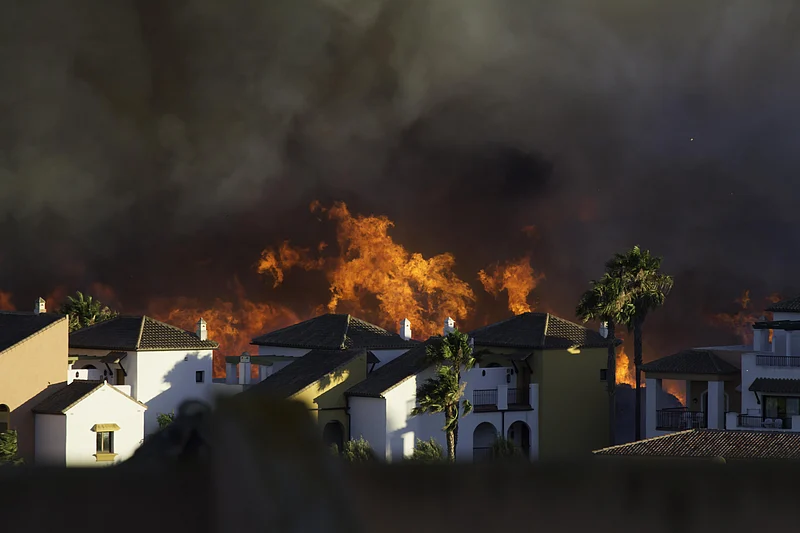Get Healthy!

- Cara Murez
- Posted December 8, 2022
More Americans Are Moving to Wildfire-Prone Areas
Some Americans appear to be moving from areas with frequent hurricanes and heat waves to places threatened by wildfire and rising heat.
They're trading in the risk of one set of natural disasters for another because the wildfires are only beginning to become a national issue, according to researchers.
"These findings are concerning, because people are moving into harm's way -- into regions with wildfires and rising temperatures, which are expected to become more extreme due to climate change," lead author Mahalia Clark said in a news release from the University of Vermont. She's a researcher at the university's Gund Institute for Environment and Rubenstein School of Environment and Natural Resources.
The researchers studied the issue by combining U.S. Census data with that on natural disasters, weather, temperature, land cover, demographics and socioeconomic factors.
Between 2010 and 2020, the top U.S. migration destinations included cities in the Pacific Northwest; Arizona, Colorado, Nevada and Utah in the Southwest; Texas; Florida, and a large area of the Southeast from Nashville to Atlanta to Washington, D.C.
They moved away from the Midwest, the Great Plains and areas along the Mississippi River, including many counties hit hardest by hurricanes or frequent heat waves, the researchers said.
"These findings suggest that for many Americans, the risks and dangers of living in hurricane zones may be starting to outweigh the benefits of life in those areas," said co-author Gillian Galford, a research associate professor at UVM. "That same type of tipping point has yet to happen for wildfires and rising summer heat, our results suggest, probably because they've only become problems at the national level more recently."
The team was surprised by how little the obvious climate impacts of wildfire and heat seemed to affect migration.
"Most people still think of wildfires as just a problem in the West, but wildfire now impacts large swaths of the country -- the Northwest down to the Southwest, but also parts of the Midwest and the Southeast like Appalachia and Florida," Clark said.
The top migration destinations shared common qualities, including warmer winters, proximity to water, moderate tree cover, moderate population density and better human development index (HDI) scores in addition to their wildfire risks.
People tended to leave counties with low employment, higher income inequality and more summer humidity, heat waves and hurricanes.
City planners may need to consider discouraging new development where fires are most likely or difficult to fight, the researchers said. Also, policymakers must consider fire prevention in areas of high risk with large human population growth.
"We hope this study will increase people's awareness of wildfire risk," Clark said. "When you're looking for a place to live on Zillow or through real estate agents, most don't highlight that you're looking at a fire-prone region, or a place where summer heat is expected to become extreme. You have to do your research."
The findings were published Dec. 8 in the journal Frontiers in Human Dynamics.
More information
The U.S. Environmental Protection Agency has more on wildfires.
SOURCE: University of Vermont, news release, Dec. 8, 2022





